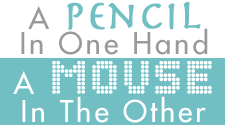
 contributed by Brian Lin, AIA [co-director, BeLoose Graphic Workshop / adjunct faculty of Interior Architecture, San Jose State University / frustrated concert pianist]
contributed by Brian Lin, AIA [co-director, BeLoose Graphic Workshop / adjunct faculty of Interior Architecture, San Jose State University / frustrated concert pianist]
Adaptation. Being a designer these days, you have to adapt to things; ranging from how you work, to how you communicate with people, especially through drawing. While the debate about hand drawing existing in anachronistic paradigms and designers desperately trying to keep up with digital program updates continue, I took a step in another direction and began exploring a different path: What if I tried COMBINING the strengths of both techniques” I have been doing more and more drawing hybrid overlays that began as views from Revit Model and Sketch-Up Model views very recently. This process has been an effective and efficient way to test out ideas quickly and then using Photoshop to add quick color and entourage to generate convincing spaces for design team collaboration and interim presentations for the client.

This drawing effort was for a hospital waiting room for one of the largest healthcare providers in the United States (above) and was blocked out, drawn, and rendered in Photoshop with the client present. I have found having the client directly involved with the process advocated a more collaborative effort between designer and client and they appreciated being able to see the design imagery materialize before their eyes.

STEP 1: Red Pencil Blockout | Red pencil blockout was drawn over a printed view from the Revit Model. Drawing is on trace and was taped over a black and white print. Using a straightedge, I added massings of the couches, chairs, and articulation in the ceiling and hallway openings. The blockout phase allowed me to try out a number of different seating options and ceiling designs quickly before committing them to a final black ink drawing. (20 minutes)

STEP 2: Overlay Ink Line Drawing | I taped another clean sheet of trace paper over the redline block out and produced a final ink line drawing with a black fine-tipped pen. I used freehand on the linework to give a "looser" feel to the image. On normal drawings and sketches, I usually add people, but for this particular work, all color, shades and shadows, and entourage will be done in Photoshop. (10 Minutes)

STEP 3: Final Photoshop Image Montage and Color Rendering | For the final step, I scanned and imported the linework into Photoshop. The walls, glass signage, floor, ceiling, and people were all on separate layers in order to control hierarchy and transparencies. Utilizing gradients and filters, I was able to create interesting effects for the dropped ceiling (in blue) and the floor. You’ll notice that the final work is not overly-rendered which is the effect that I wanted. Therefore, I accomplished an effective and balanced view that was then exported into a final presentation in PowerPoint and on a final presentation board. The artwork size is 11"x17" and set at 200dpi. (25 Minutes)
As you can see, you can generate numerous convincing views of your design in a relatively short amount of time. By using both hand and digital tools, both sides of your brain are utilized and what is produced can be a balanced, and mutually creative designed environment…at least on paper/screen.
EDITOR’S NOTE: If you thought these tips on how to marry hand drawing techniques with digital technology were helpful, then just think of what you would learn if you signed up for one of Mike and Brian Lin’s BeLoose Graphic Workshops. Their methods will instill a confidence in your abilities to communicate designs with colleagues and – more importantly – clients and potential clients.


